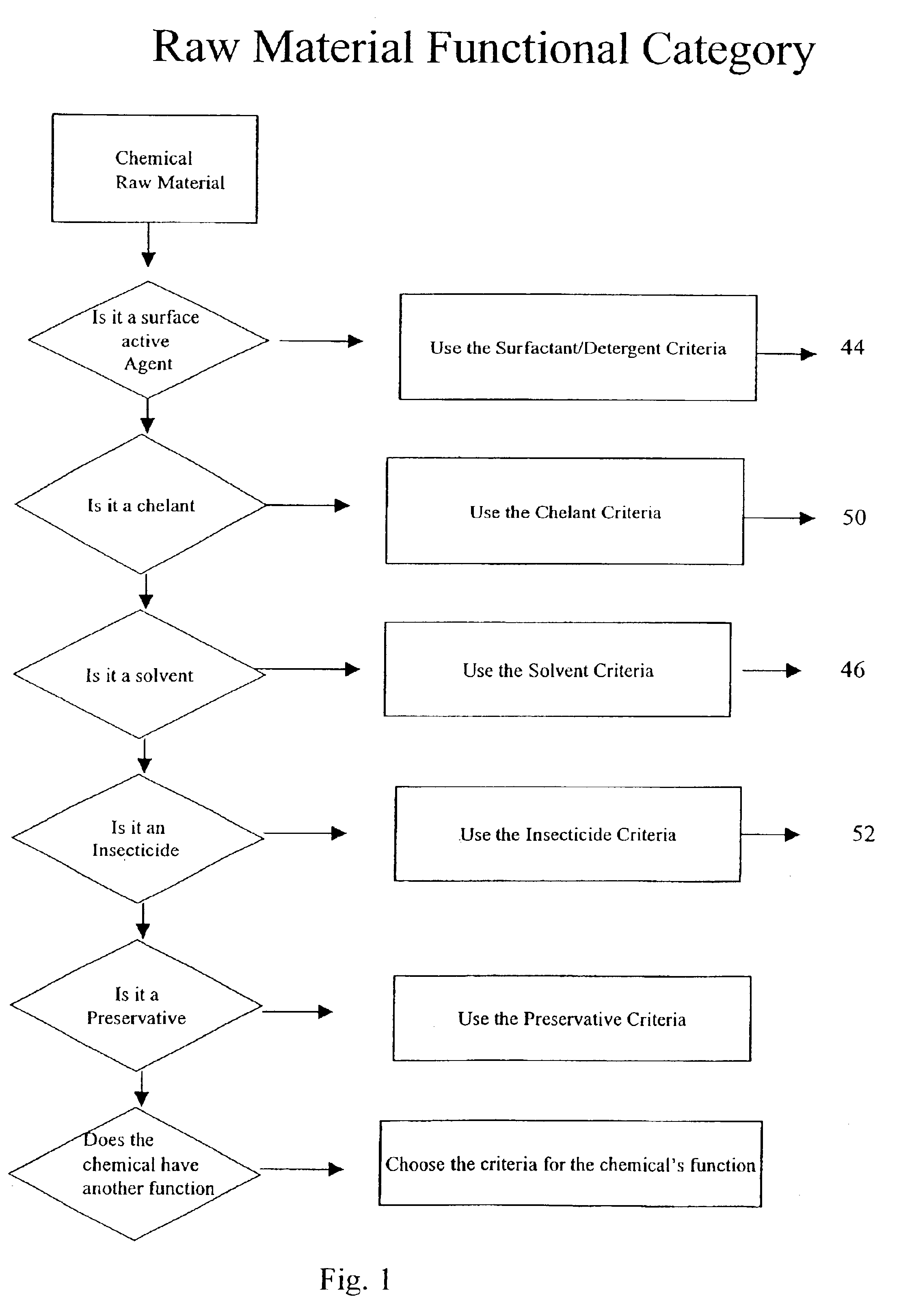Methods for evaluating chemical components based on their proposed function in the product they are to be used in
- Summary
- Abstract
- Description
- Claims
- Application Information
AI Technical Summary
Benefits of technology
Problems solved by technology
Method used
Image
Examples
Embodiment Construction
[0040]FIG. 1 depicts a flow chart illustrating a determination of a functional category for a chemical raw material. Initially, the chemical component is categorized in a category selected based on the functional use proposed for the component (e.g. a surfactant use 44).
[0041]For that category, the surfactant component is initially preferably compared to the five primary category-specific environmental criteria associated with the selected functional category (see FIGS. 2-6), and a “class” value indicating a level of environmental impact is assigned for each category-specific criteria for that chemical. An overall environmental class / grade for the chemical component is then preferably calculated as the sum of the class values for each of the category-specific divided by the number of category specific criteria to determine an average. Alternatively, the values could be otherwise combined, or could be weighted in some manner depending on the importance of each criteria for that appli...
PUM
 Login to View More
Login to View More Abstract
Description
Claims
Application Information
 Login to View More
Login to View More - R&D
- Intellectual Property
- Life Sciences
- Materials
- Tech Scout
- Unparalleled Data Quality
- Higher Quality Content
- 60% Fewer Hallucinations
Browse by: Latest US Patents, China's latest patents, Technical Efficacy Thesaurus, Application Domain, Technology Topic, Popular Technical Reports.
© 2025 PatSnap. All rights reserved.Legal|Privacy policy|Modern Slavery Act Transparency Statement|Sitemap|About US| Contact US: help@patsnap.com



